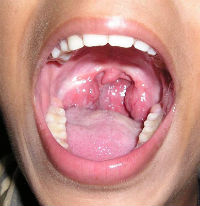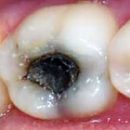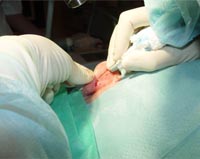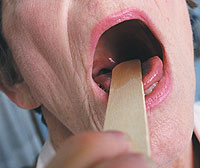What are the symptoms and methods of treatment of chronic tonsillitis (inflammation of almonds) exist today, indications for the removal of almonds.
Content
- What is the almond sky and why they are inflamed
- The main forms of chronic tonsillitis and symptoms of each of them
- How to treat chronic tonsillitis
Chronic tonsillitis — the disease you have to personally meet many. After all, by different data from 4 to 25% of people sooner or later faced with this unpleasant problem. How to recognize and how to treat chronic inflammation of almonds, this article will help you.
What is the almond sky and why they are inflamed

If you widespread the mouth wide and enclose there with a flashlight, you can see two small rollers immediately behind the sky. This is a palatal almond. They consist of a huge amount of lymphocytes — Blood cells performing a protective function. Almonds are located near the intersection of respiratory and digestive tracts. But these are two main ways of infection in the body. It is not surprising that these organs are inflamed so often. After all, it is their one of the first to deal with infection.
On the inner surface of these formations is located up to twenty recesses — Lakun Almonds. Branched moves depart from them — Crypta. Such a structure allows you to increase the surface of the almonds, and therefore the effectiveness of the fight against the causative agent. But it also plays the evil joke when they are inflammation — tonsillite. An increase in the tonsils, the presence of folds of the mucous membrane of the mouth and, possibly, the sacks overlap the outflow of the liquid from the crypt. They create excellent conditions for the development of pathogenic microflora.
The cause of tonsillitis can be one of the few dozen pathogens. But in most cases it causes staphylococci, streptococci or combinations thereof. Chronic process — This is usually the result of a non-coherent sharp tonsillitis (angina). Until a certain point, the body manages to restrain the development of infection. In such periods (remissions), most people do not have complaints about their well-being. But with the decrease in immunity, the development of additional diseases is sharpened and manifests as an angina. However, 4% of people have a chronic process can flow without periodic exacerbations. This form is called a nonsense.
The main forms of chronic tonsillitis and symptoms of each of them
The disease can occur in the form of three forms:
- simple;
- toxico-allergic form-1 (Taf-1);
- Toxico-allergic form-2 (Taf-2).
Simple form manifests periodic exacerbations in the form of angino. At the same time, the patients can increase the temperature, they complain about pain in the throat at rest and when swallowing. In case of inspection, extended almonds, their redness, sometimes white bloom or gunnock. Regional lymph nodes are often increasing. Angground relapses usually arise 1-2 times a year.
When taf-1, the disease is not only local, but also a general nature. This is explained by the negative influence of inflammation products and toxins for the entire body. In addition to the above symptoms, patients register a slight increase in temperature, weakness, fast fatigue, joint pain and heart. Such violations are often manifested after any respiratory diseases and Angry.
Taf-2 differs from the first form greater severity of symptoms. Almost always diagnose violation of the liver and kidney. But the disease can affect any organ including the brain. It is also possible to develop sepsis and rheumatoid arthritis. Symptoms will depend on localization and seriousness of damage.
How to treat chronic tonsillitis

Treatment of inflammation of almonds depends primarily on the form of the disease. There are two main method of therapy: conservative and surgical. The choice of method of treatment depends on the form of the disease and its gravity.
Conservative treatment
Applied with simple and taf-1 forms of the disease. It includes:
- Mondayling;
- introduction to inflamed tissues of antiseptic and antibacterial solutions;
- reception of antibacterial tablets acting locally on microorganisms;
- the appointment of generalization drugs;
- physiotypers (UHF, UV, ozokerite);
- vitamins;
- Elimination of symptoms (rhinitis, pharyngitis).
If necessary, the doctor may assign antibacterial therapy or antihistamines.
Surgery
This method involves removing almonds (tonsilectomy) and is recommended only in extreme cases when all other methods turned out to be ineffective. Also, the testimony for tonsilectomy is Taf-2 and almond abscesses.
The operation is carried out mainly under local anesthesia. After removal of almonds, it is recommended to comply with bed mode for two days. On the first day, the patient is advised to refrain from eating, drinks, conversations. From 2nd to 4-5th day — Only warm casket food. From the third day, the patient prescribes the rinse of the oral cavity by antiseptic solutions.









